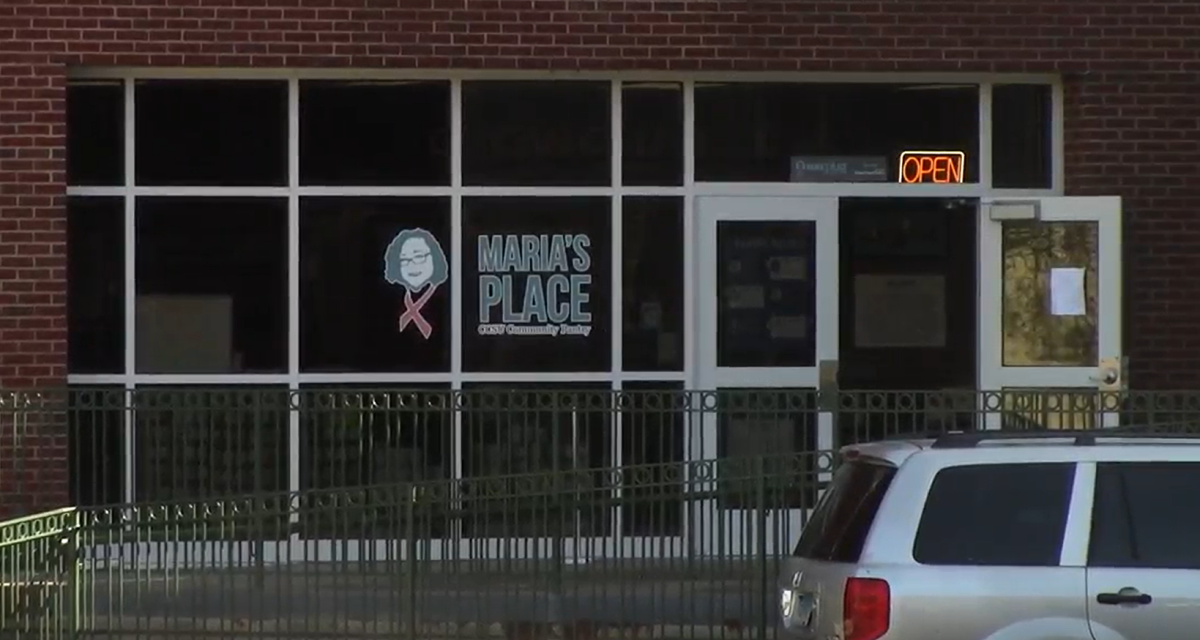 Terence Stewart / Special to The Recorder
Terence Stewart / Special to The Recorder
When you’re a hungry college student living on a tight budget, you’re more than likely to purchase items off of McDonald’s’ dollar menu, rather than a $6 salad made with locally grown vegetables.
But would you be willing to pay more for locally grown foods if you knew it was a benefit to the planet and local economy?
That was one of the “food for thought” questions posed to more than 50 students who attended the panel discussion titled “Fast Food/Slow Food: Are We Ready to Pay the Bill?” in Maloney Hall last Wednesday.
The goal of the discussion was to educate students on the advantages of eating locally grown fruits, vegetables and grains versus fast food. Most students in the audience were receptive to the idea of purchasing locally grown foods but said the high price tag was a major deterrent.
When panel moderator Dr. David Fearon of the School of Business asked students if they’d be willing to pay more for their meal plans to make organic foods available in the dining halls, only a quarter of the students supported the idea.
“I’m very much into going after what’s local,” said CCSU senior Suzanne Hurd. “But with the price of tuition going up and everything else as well, the price [of locally grown foods] is the only issue.”
However, panelist Jane Slupecki, who works for the Connecticut Department of Agriculture, said the price would be lower if more people started purchasing locally grown fruits, vegetables and grains.
“It’s about supply and demand,” she said. “When the demand increases the price will go down.”
In addition, panelist Mike Kandefer, general manager of Urban Oaks Organic Farm, said some locally grown foods are expensive because they’re certified organic.
To be considered organic, food must be produced without pesticides, synthetic fertilizers, growth hormones, etc. It can cost farmers anywhere from $400 to $1,000 to obtain organic certification, which is why organic foods are costly.
Yet Bill Duesing, director of the Northeast Organic Farming Association in Connecticut, contended the benefits of eating locally grown produce outweigh the benefits of eating fast food. The most obvious benefit is health-related.
“We spend less money on food than any other country and more of our money on healthcare,” said Duesing. “Three or four of the top diseases in this country are connected to what we eat. One of the things we can do to improve our diets is to eat less meat and less dairy products.”
Buying foods produced in Connecticut or the northeast region also helps the environment because it reduces the amounts of energy consumption.
“[Most people] need the equivalent of about a cup of gasoline a day to keep [them] going in terms of energy. Yet we use on average ten times that to deliver our food to us,” said Duesing.
According to panelist Ingrid Jon, district manager of CCSU’s Sodexho Food Services, some of the foods served in the dining halls comes from states such as California, which requires almost 100 gallons of gas to get to Connecticut.
Buying locally would not only decrease energy consumption, but help maintain agricultural jobs in the state as well. Slupecki said farms in Connecticut are disappearing at the fastest rate in the country to develop commercial projects such as shopping malls. That puts many farmers and agricultural workers out of jobs.
Slupecki said these problems could be alleviated if students demanded local foods, educated the community, and supported grassroots efforts to keep farming in Connecticut.
For information on supporting local farms, visit the Northeast Organic Farming Association’s Web site at www.ctnofa.org.



